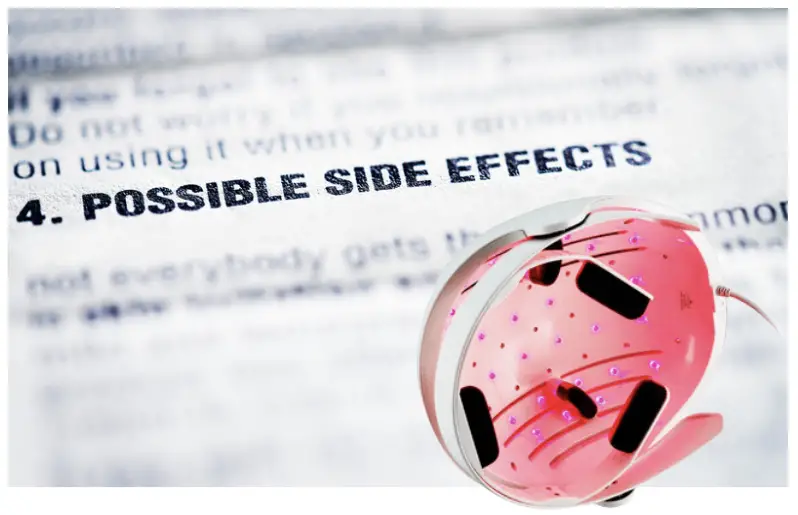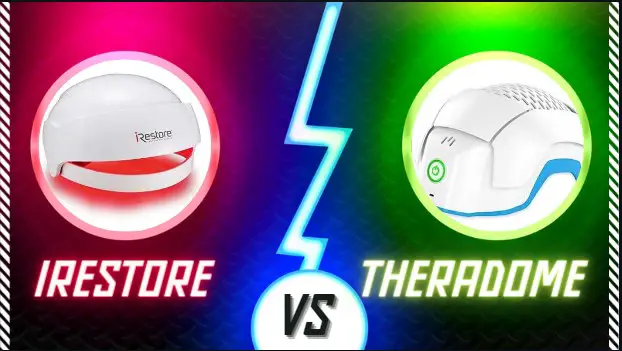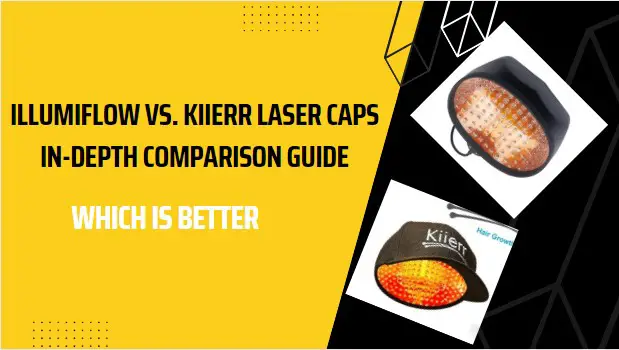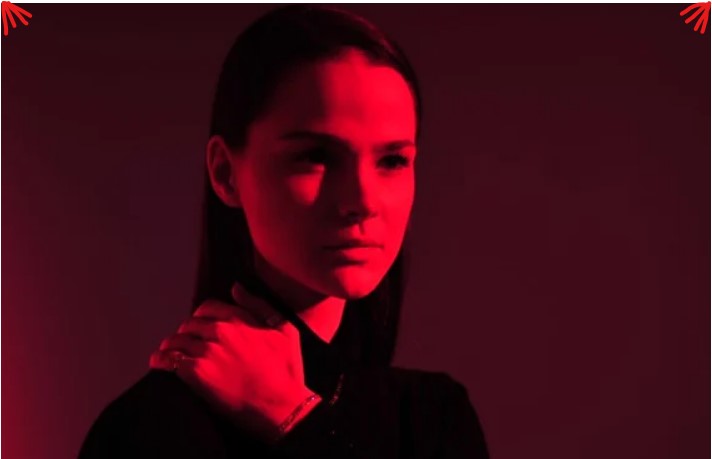Are there any side effects of LLLT? Low-level laser therapy (LLLT) is a non-invasive treatment that uses low-level lasers or light-emitting diodes (LEDs) to stimulate cellular function and promote healing. It is commonly used for pain relief, wound healing, and skin rejuvenation. While LLLT is generally considered safe, there are some potential side effects to be aware of.
Understanding LLLT: LLLT works by delivering low-level light energy to the body’s cells. This energy is absorbed by the mitochondria, which are the cellular “power plants,” and it helps to increase energy production and promote healing. LLLT has been shown to have a wide range of effects at various levels, including reducing inflammation, increasing circulation, and promoting tissue repair.
Common Side Effects of LLLT: The most common side effect of LLLT is mild skin irritation or redness at the treatment site. This usually goes away within a few hours or days. Some people may also experience a mild headache or dizziness after treatment, although this is rare. In general, the side effects of LLLT are mild and short-lived.
Key Takeaways
- LLLT is a non-invasive treatment that uses low-level lasers or LEDs to stimulate cellular function and promote healing.
- The most common side effect of LLLT is mild skin irritation or redness at the treatment site.
- In general, the side effects of LLLT are mild and short-lived.
Understanding LLLT
Low-Level Laser Therapy (LLLT), also known as photobiomodulation, is a non-invasive treatment that uses low-intensity light to stimulate biochemical changes in cells. The treatment is used to help repair tissue and reduce inflammation, and is commonly used to stimulate hair regrowth in individuals with hereditary hair loss.
LLLT involves exposing cells or tissue to low levels of red and near-infrared (NIR) light. The light penetrates the skin and is absorbed by the mitochondria, which are the powerhouses of the cells. The absorbed light energy is then converted into cellular energy, which helps to repair damaged tissues and reduce inflammation.
LLLT is a safe and effective treatment with few side effects. However, some individuals may experience mild side effects such as redness, itching, or swelling at the site of treatment. These side effects are usually temporary and subside within a few hours.
It is important to note that LLLT is not a cure for any medical condition, but rather a supportive therapy that can help to improve symptoms. If you are considering LLLT, it is important to consult with a healthcare professional to determine if it is a suitable treatment option for you.
Overall, LLLT is a promising treatment option for individuals with a variety of medical conditions. However, more research is needed to fully understand the potential benefits and limitations of this treatment.
Common Side Effects of LLLT
Low-Level Laser Therapy (LLLT) is a non-invasive treatment that uses low-power lasers or light-emitting diodes (LEDs) to stimulate cellular function and promote healing. LLLT is used to treat a variety of conditions such as musculoskeletal pain, inflammation, wound healing, and skin rejuvenation. LLLT is generally safe and well-tolerated, but like any medical treatment, it may cause side effects in some people. In this section, we will discuss some of the common side effects of LLLT.
Skin Irritation
LLLT may cause skin irritation in some people. This is usually mild and temporary, and it typically resolves on its own within a few days. Skin irritation may manifest as redness, itching, or a rash. To minimize the risk of skin irritation, it is important to follow the treatment protocol recommended by your healthcare provider. Your provider may recommend applying a moisturizer or aloe vera gel to the treated area to soothe the skin.
Eye Damage
LLLT should not be used on or near the eyes, as it may cause eye damage. The laser or LED light can be harmful to the retina and may cause permanent vision loss. If you are undergoing LLLT treatment near your face, your healthcare provider will provide you with protective goggles to wear during the treatment.
Headache
Some people may experience a headache after LLLT treatment. This is usually mild and temporary, and it typically resolves on its own within a few hours. Headaches may be caused by the relaxation of muscles or changes in blood flow. If you experience a headache after LLLT treatment, you can take over-the-counter pain medication such as acetaminophen or ibuprofen.
Fatigue
LLLT may cause fatigue in some people. This is usually mild and temporary, and it typically resolves on its own within a few hours. Fatigue may be caused by the relaxation of muscles or changes in blood flow. If you experience fatigue after LLLT treatment, it is important to rest and avoid strenuous activities for a few hours.
Conclusion
LLLT is a safe and effective treatment that can help alleviate pain, reduce inflammation, and promote healing. While LLLT is generally well-tolerated, it may cause side effects in some people. If you experience any side effects after LLLT treatment, it is important to contact your healthcare provider.
Rare Side Effects of LLLT
Low-level laser therapy (LLLT) is generally considered a safe and well-tolerated treatment. However, as with any medical treatment, there is always a risk of side effects. The majority of side effects associated with LLLT are mild and temporary, such as redness or swelling at the treatment site.
In rare cases, more serious side effects have been reported. These include:
- Eye Injury: LLLT can cause damage to the eyes if the laser beam is directed into the eyes. Eye protection should always be worn during LLLT treatments to prevent this from happening.
- Skin Burns: LLLT can cause burns to the skin if the laser beam is too powerful or if the treatment time is too long. Burns can range from mild to severe and may require medical attention.
- Increased Pain: In some cases, LLLT can actually increase pain levels. This is more likely to occur if the treatment is performed incorrectly or if the wrong type of laser is used.
- Allergic Reaction: Although rare, some people may experience an allergic reaction to the materials used during LLLT treatments. Symptoms may include itching, rash, or difficulty breathing.
If you experience any of these side effects, it is important to seek medical attention right away. In most cases, side effects can be easily treated and will not cause any long-term damage.
It is important to note that the risk of side effects from LLLT is very low, especially when the treatment is performed by a qualified healthcare professional. If you have any concerns about the safety of LLLT, talk to your healthcare provider before undergoing treatment.
Long-Term Side Effects of LLLT
Low-Level Laser Therapy (LLLT) has been used for many years to treat a variety of health conditions, including musculoskeletal pain, hair loss, and skin conditions. While the treatment is generally considered safe, there are some potential long-term side effects that you should be aware of.
Skin Damage
One of the most common long-term side effects of LLLT is skin damage. This can occur when the laser is used at too high of an intensity or for too long of a duration. Symptoms of skin damage may include redness, swelling, and blistering. In severe cases, the skin may become permanently discolored or scarred.
Eye Damage
Another potential long-term side effect of LLLT is eye damage. This can occur when the laser is used too close to the eyes or when the patient does not wear proper eye protection. Symptoms of eye damage may include vision loss, sensitivity to light, and eye pain.
Cancer Risk
There is some concern that LLLT may increase the risk of cancer, particularly skin cancer. This is because the treatment involves exposure to light, which can damage DNA and increase the risk of mutations. However, more research is needed to determine the exact level of risk.
Other Potential Side Effects
In addition to the above long-term side effects, there are some other potential side effects of LLLT that you should be aware of. These may include:
- Headaches
- Nausea
- Dizziness
- Fatigue
If you experience any of these symptoms after undergoing LLLT, you should speak to your healthcare provider right away.
Overall, while LLLT is generally considered safe, there are some potential long-term side effects that you should be aware of. If you are considering undergoing this treatment, it is important to discuss the risks and benefits with your healthcare provider to determine if it is the right choice for you.
Factors Influencing Side Effects
Low-level laser therapy (LLLT) is generally considered safe and well-tolerated. However, like any medical treatment, there is always a risk of side effects. The risk of side effects from LLLT is influenced by several factors, including:
Wavelength
LLLT devices emit light at different wavelengths, which can affect the depth of penetration and the type of tissue that is targeted. The most commonly used wavelengths for LLLT are 630-680 nm and 780-830 nm. The risk of side effects may be higher with longer wavelengths, as they can penetrate deeper into the tissue and affect a wider range of cells.
Energy Density
The energy density, or fluence, of the laser beam is another important factor that can influence the risk of side effects. Higher energy densities may increase the risk of tissue damage, while lower energy densities may not be effective. It is important to use the appropriate energy density for the specific condition being treated.
Treatment Area
The size and location of the treatment area can also affect the risk of side effects. For example, treating sensitive areas such as the eyes or genitals may increase the risk of adverse effects. It is important to follow proper safety precautions and avoid treating areas that are not recommended.
Treatment Duration and Frequency
The duration and frequency of LLLT treatment can also influence the risk of side effects. Longer treatment durations or more frequent treatments may increase the risk of adverse effects. It is important to follow the recommended treatment protocol and avoid over-treating the area.
Patient Factors
Individual patient factors can also influence the risk of side effects from LLLT. Patients with certain medical conditions, such as cancer or autoimmune disorders, may be at a higher risk of adverse effects. It is important to discuss any medical conditions or medications with your healthcare provider before undergoing LLLT treatment.
In summary, the risk of side effects from LLLT is generally low, but can be influenced by several factors, including wavelength, energy density, treatment area, treatment duration and frequency, and individual patient factors. It is important to follow proper safety precautions and discuss any concerns with your healthcare provider.
Managing Side Effects of LLLT
Low-Level Laser Therapy (LLLT) is generally considered safe and well-tolerated. However, like any medical treatment, it may cause some side effects. Fortunately, most of these side effects are mild and temporary, and can be managed easily.
Skin Irritation
LLLT may cause skin irritation, such as redness, itching, and swelling. These side effects usually disappear within a few hours or days after treatment. To manage skin irritation, you can:
- Apply a cold compress to the affected area
- Use a mild, fragrance-free moisturizer
- Avoid exposure to direct sunlight or tanning beds for at least 24 hours after treatment
Eye Damage
LLLT may cause eye damage if the laser beam is directed towards the eyes. To prevent eye damage, you should always wear protective goggles during treatment. If you experience any eye discomfort or vision changes after treatment, you should seek medical attention immediately.
Headache
LLLT may cause headache in some people, especially if the treatment is applied to the head or neck area. To manage headache, you can:
- Take over-the-counter pain relievers, such as ibuprofen or acetaminophen
- Apply a cold compress to the forehead or temples
- Rest in a quiet, dark room
Nausea
LLLT may cause nausea in some people, especially if the treatment is applied to the abdomen or pelvic area. To manage nausea, you can:
- Drink clear liquids, such as water, ginger ale, or sports drinks
- Eat small, bland meals, such as crackers or toast
- Avoid spicy or fatty foods
Conclusion
LLLT is a safe and effective treatment for a variety of conditions. However, like any medical treatment, it may cause some side effects. Most of these side effects are mild and temporary, and can be managed easily with simple home remedies. If you experience any severe or persistent side effects, you should seek medical attention immediately.
References and Additional Resources
Explore a comprehensive list of references and additional resources to understand the potential side effects of Low-Level Laser Therapy (LLLT) for hair loss treatment.
Scientific Studies and Reports
- Efficacy of Low-Level Laser Therapy in Hair Regrowth
This study from the National Center for Biotechnology Information (NCBI) explores the effectiveness of LLLT in hair regrowth and its potential side effects. - Low-Level Laser Therapy for Androgenetic Alopecia
Another NCBI study that focuses on the use of LLLT for treating androgenetic alopecia, including a discussion on side effects. - Side-effects of LLLT Among the Studied Subjects
ResearchGate provides a table summarizing the side effects of LLLT among various subjects. - Low-Level Laser Therapy Topics
ScienceDirect offers a range of topics related to LLLT, including its side effects and applications in medicine and dentistry. - FDA: Industry (Medical Devices)
The FDA provides resources for the medical device industry, including safety guidelines for devices like LLLT products. - FDA: Report a Problem
If you experience any side effects from using LLLT devices, the FDA has a platform for reporting issues.
Articles and Reviews from StagesofBalding.com
- Theradome Reviews
A comprehensive review of the Theradome LLLT device, including its efficacy and potential side effects. - iRestore Reviews: Fake or Real?
An in-depth look at iRestore, another popular LLLT device, and whether its claims are substantiated. - Best Laser Cap for Hair Loss
A roundup of the best LLLT devices for hair loss, including a discussion on their safety and effectiveness. - Illumiflow Reviews
A detailed review of the Illumiflow LLLT device, focusing on its performance and any reported side effects. - LLLT Before and After
Real-world examples and testimonials of people who have used LLLT for hair growth, including any side effects they experienced.
By diving into these resources, you’ll gain a well-rounded understanding of the potential side effects of Low-Level Laser Therapy (LLLT) for hair loss treatment.
- AI Powered Bald Filter Online 2024: See Yourself with No Hair! - January 19, 2024
- Harklinikken Bad Reviews 2024: Analyzing Negative Feedbacks - January 18, 2024
- How to Get the Alex Eubank Hair | Step-By-Step Tutorial 2024 - January 18, 2024








